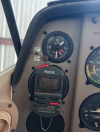midlifeflyer
Touchdown! Greaser!
I've seen AOPA fall into that trap. The Warbird case several years ago."Thank you for pointing out the loophole in our rules. We'll correct that immediately.
Love,
Office of the Chief Counsel"
I've seen AOPA fall into that trap. The Warbird case several years ago."Thank you for pointing out the loophole in our rules. We'll correct that immediately.
Love,
Office of the Chief Counsel"
It's unfortunate, but some people just can't help themselves. I think it's their own insecurities that don't allow them to just use their own judgment on things; they want someone to tell them it's OK before they do it. Of course, that's the same reason Govt. employees never want to make any decisions unless their boss tells them it's OK (which then just continues up the chain until it fizzles out and nobody makes a decision at all).Always think down the road for the consequences of writing to the Chief Counsel. Not just for yourself, but are you going to screw your fellow aviators over?
I don't see any hemming and hawing, I see people coming right out and saying what they mean.To all those hemming and hawing that I kicked the metaphorical hornets’ nest:
If my letter prompts the FAA to tighten the rules for digital clocks, I’ll apologize to everyone in this thread.
If my letter prompts the FAA to relax the rules for digital clocks, everyone who chewed me out should apologize.
Enough said.
To all those hemming and hawing that I kicked the metaphorical hornets’ nest:
If my letter prompts the FAA to tighten the rules for digital clocks, I’ll apologize to everyone in this thread.
If my letter prompts the FAA to relax the rules for digital clocks, everyone who chewed me out should apologize.
Enough said.


I get the cynicism, it often does happen that way. But not all the time. For example, the Coleal letter significantly opened up part 14 CFR part 43 for those of us who do as much of our own maintenance as we legally can...

I get the cynicism, it often does happen that way. But not all the time. For example, the Coleal letter significantly opened up part 14 CFR part 43 for those of us who do as much of our own maintenance as we legally can. Page 2 paragraph 2 is priceless!
These days, that guy should get kudos for security awareness. Seeing a non-uniformed person drive up to the field and scrutinize someone's airplane, seems worthy of politely challenging that person.
If you see a new person at your airport, are you afraid to walk up and say hello? That's all a "polite challenge" has to be. A stranger messing with an airplane might be your new airport neighbor. But it does sound like you would do something. Not just ignore him?I'm not going to challenge anybody in that situation; if it's a thief I might get shot. I'd call the airport desk, or possibly the cops, and report some stranger messing around with an aircraft. My airport is not paying me to be their security guard.
If there's one thing I've learned while flying under Part 135 for the past couple of years, it's that I pretty much can't do anything to the airplane that requires a tool. This may not be exactly correct, but does provide a decent initial simplification.Perhaps not the best example you could have chosen. The response was not what Bombardier was looking for, even though Part 91 operators/pilots got tossed a very nice bone.
The question in the Coleal letter was framed very narrowly. We got a huge bonus from the answer, but the question itself was tightly phrased so that any significant negative response would do very little harm.
While your question was framed in the context of transport category aircraft, yourinquiry, including as supplemented by Mr. Hernandez, is specific to the Learjet Model 60aircraft. You referenced an FAA Continued Operational Safety (COS) initiative inwhich, in November 2008, the FAA 's Wichita ACO (Aircraft Certification Office)requested an AFM (Airplane Flight Manual) limitation for the Learjet Model 60 thatwould requi re daily tire pressure checks. The issue, as you alluded to in your letter, iswhether checking tire pressure on the Learjet Model 60 is considered to be a maintenanceor preventive maintenance function, versus a simple preflight inspection task. Yourcorrespondence correctly observed that, under 14 C.F.R. § 43.3(g), for aircraft notoperated under part 121, 129, or 135 (e .g., part 91), a pilot may perform preventivemaintenance on an aircraft operated by that pilot.
In fact, Mr. Coleal did NOT get the response he desired: that checking tire pressure is just a simple pre-flight task on the Learjet 60, rather than a maintenance item.
...because checking tire pressure is but asimplistic and small subset of the tasks necessary in removing, installing, and repairinglanding gear tires, it does not rise to the level of even preventive maintenance, and shouldtherefore be considered an appropriate pre-flight inspection task. We do not agree....We have discussed this issue with officials in the FAA's Flight Standards ServiceAircraft Maintenance Division (AFS-300) and concur with their determination thatchecking tire pressure on a Learjet Model 60 aircraft is preventive maintenance and not asimple pre-flight inspection task. We believe their determination is a reasonable onebased on the re levant facts and circumstances. These include the high tire air pressure(up to 219 psig), the need for a proper and calibrated gauge, and the possibility of anincorrect reading if the check is not performed properly.
So it's not a pre-flight item. A pilot can do the pressure check as PM when operating under Part 91, but not under Part 135 so an A&P has to do the required daily check. Not what Mr. Coleal was looking for, but it didn't really make things much worse.
No one drives a grey Chrysler K car unless they're assigned to it.These days, that guy should get kudos for security awareness. Seeing a non-uniformed person drive up to the field and scrutinize someone's airplane, seems worthy of politely challenging that person.


The ironic part of this thread is that the chief counsel's office will most certainly punt this letter to flight standards as a policy question. Note that since 2019, the FAA has issued 11 legal interpretations total. Compare that with the prior years when they issued 40-100 or so interps per year. I think the lawyers realized that they were spending lots of time answering questions to settle pilot forum bar bets.
Probably less now with high tech equipment, but digital timers like this velcroed to the panel were common with the old analog panel clock just sitting there unused. I used one for years.
View attachment 126042

That’s my old one. I graduated to the Davtron on the panel but still keep the old one- can’t have enough backups.Probably less now with high tech equipment, but digital timers like this velcroed to the panel were common with the old analog panel clock just sitting there unused. I used one for years.
View attachment 126042
I guess we’ll have to send a letter to the Chief Counsel inquiring as to why they stopped issuing legal interpretations…Or they decided that issuing opinions without a court case is confining. They'd rather make case law after somebody's busted than issue an opinion that might preclude the bust in the first place.
I guess we’ll have to send a letter to the Chief Counsel inquiring as to why they stopped issuing legal interpretations…
FYI: while I don’t know how you define “significantly opened up,” the Coleal LOI simply posted existing guidance in this format that has been around for decades. The key part of the 2nd paragraph is this:For example, the Coleal letter significantly opened up part 14 CFR part 43 for those of us who do as much of our own maintenance as we legally can. Page 2 paragraph 2 is priceless!
“As with the other paragraphs of Appendix A (i.e., on major repairs and major alterations), the lists are better viewed as examples of the tasks in each category-they cannot be considered all inclusive.”
Actually, mine was old enough to come from Radio Shack.Heretic. You’re supposed to use the three times as expensive Sporty’s one.
Don’t worry about it. Ultimately, it’s probably harmless. Unnecessary, but harmless.All it took was a letter to the FAA about clocks and I somehow triggered half of POA into underwear-twisting cartwheels about the mere possibility of an unfavorable interpretation.
The Coleal letter did not merely post existing guidance, but actually reversed what part 43 literally says, and also reversed circular 43-12A. This changed a situation where anything not listed in part 43 could not legally be done, to a situation where many tasks and operations are considered preventive maintenance, even if not listed.FYI: while I don’t know how you define “significantly opened up,” the Coleal LOI simply posted existing guidance in this format that has been around for decades. ...
.....the Coleal LOI simply posted existing guidance in this format that has been around for decades.
Not familiar with that one - what's that back story?The infamous known icing debacle comes to mind.
Would you please become a High School Guidance Counselor, You Tube Influencer, or even start your own cult and preach this wisdom to the masses?However, I know when to shut up and take "yes" for an answer,
My recollection: Somebody requested clarification on the definition of known icing, resulting in a draconian and restrictive Chief Counsel letter. After much weeping, wailing, and gnashing of teeth, the FAA eventually replaced this with a much more reasonable policy.Not familiar with that one - what's that back story?
@Palmpilot gave the essence.Not familiar with that one - what's that back story?
The Chief Counsel letter was problematic but the actual policy in practice was always reasonable and never actually changed.My recollection: Somebody requested clarification on the definition of known icing, resulting in a draconian and restrictive Chief Counsel letter. After much weeping, wailing, and gnashing of teeth, the FAA eventually replaced this with a much more reasonable policy.
The Coleal letter did not merely post existing guidance,
Guidance comes in many forms. As I stated, the method, ie., guidance, of applying the Part 1 definition of a maintenance task to the list in Part 43 Appx A has been around for quite some time and predates Coleal.No, I don't think that's correct.
and also reversed circular 43-12A.
While its been many brain cells ago, I seem to recall when that AC was revised it caused issues as it indicated a more restrictive stand on prevent mx than was in the AC original revision and was debated extensively back then. Regardless, I can assure you pilots have been performing “expanded” prevent mx tasks using Part 1 and Part 43 together as I mentioned above just as I have used it for determining major repairs/alterations for many years... at least in my experience and areas that I worked in.The "existing guidance" you mention comes from AC 43-12A which says

Probably less now with high tech equipment, but digital timers like this velcroed to the panel were common with the old analog panel clock just sitting there unused. I used one for years.
View attachment 126042


